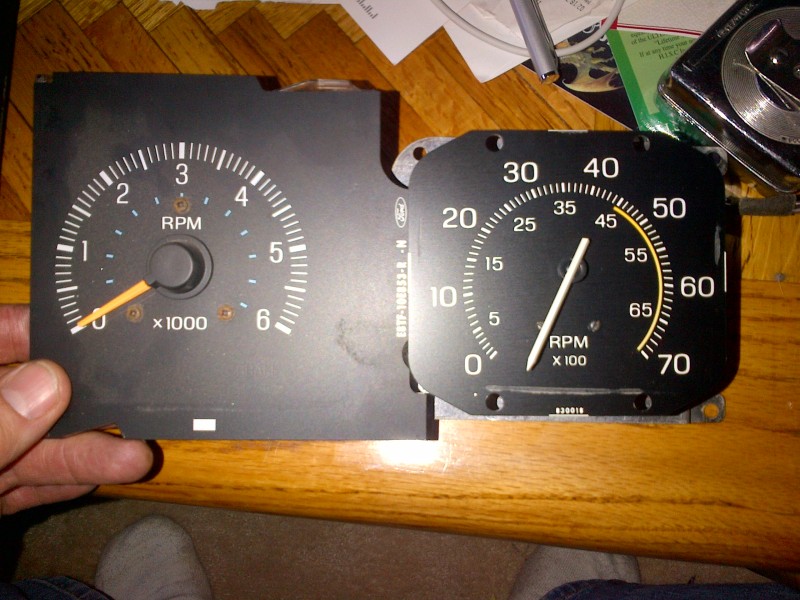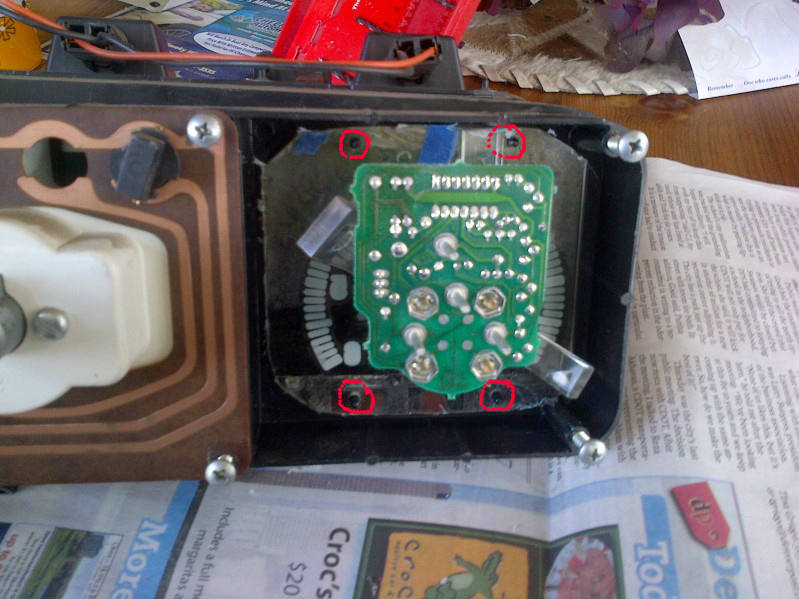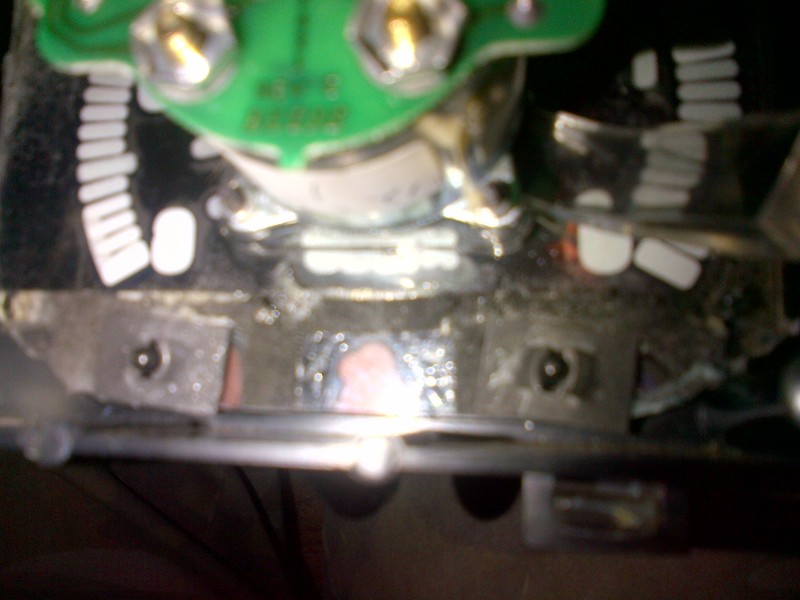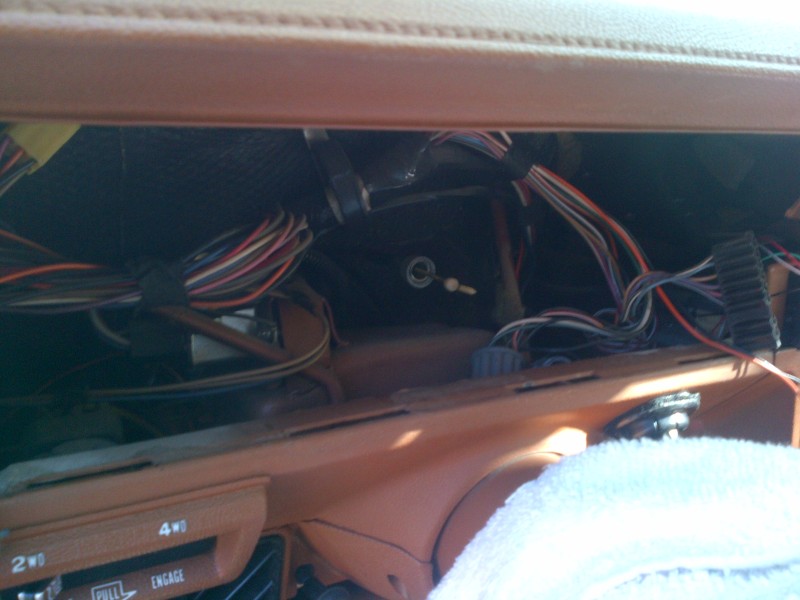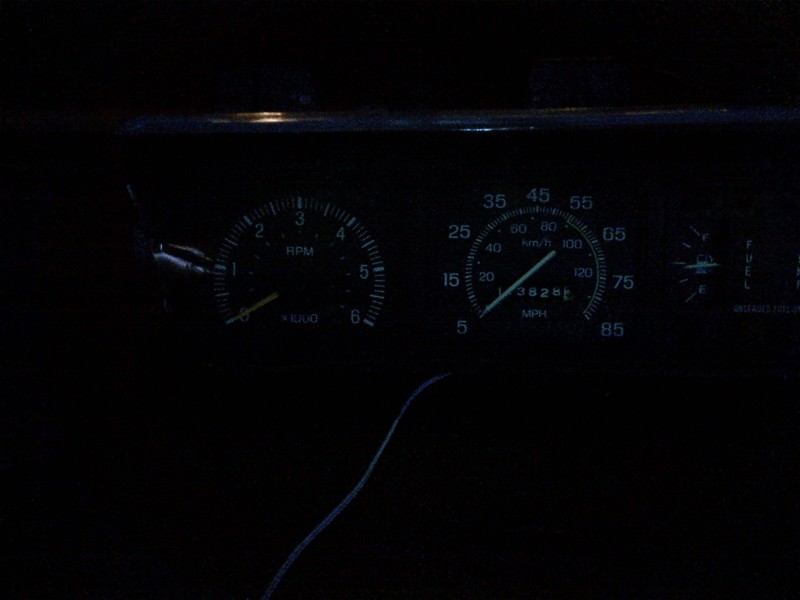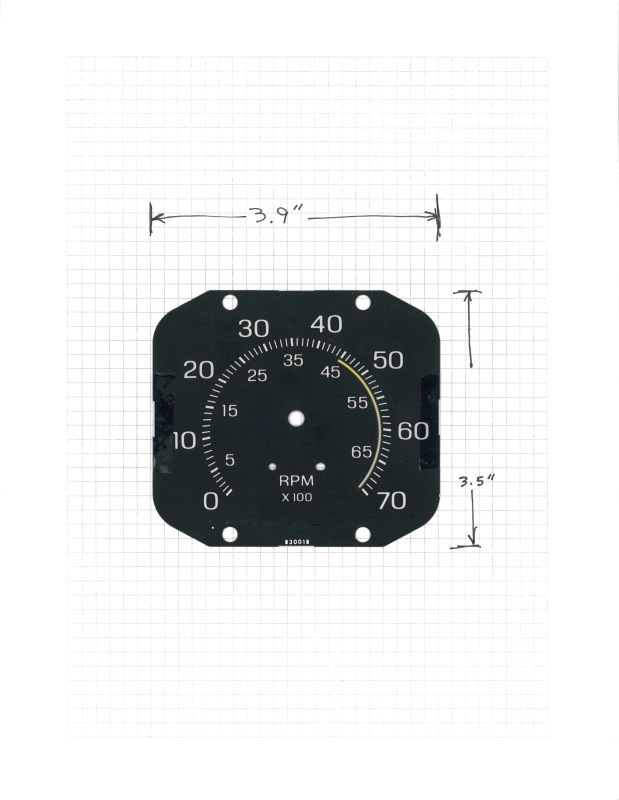Installing a Ford F150 Tach in an Eagle
By amceaglenest.com member "vangremlin".
I will go through the steps I followed to install this tach in the original tach location. I intend to break it up into several posts, as I was halfway through the steps last night when my computer re-booted and all was lost. Here are the steps I am going to break it into:
Finding a tach Fitting and installing the tach Wiring the tach Optional: LED lighting Re-installing the instrument cluster
Finished product:
Finding a tach:
The factory tach's are notorious for failing, and it doesn't do any good to get another Eagle tach as it's likely to die also. Aftermarket tach's are okay, but I've never liked those big 5" tachs that attach to the steering columns, and usually the RPM range is too high for the Eagle engines. I believe it was Captspillane who started working on installing a Cherokee tach, which made me look into what other tach's might work. I decided to look at tach's in vehicles with the Ford 300 I6, since I figured the motors were similar, and the distributor guts were the same.
Turns out the 87-91 tachs in the Ford F150, F250, and F350 are a great matchup for the Eagle. Here is a picture comparing the two:
Some of the advantages of the Ford tach include its about the same size (minimal trimming necessary), dial face is similar to the original tach and the speedometer including the number style, the max RPM is only 6000 so you'll be able to at least get the needle half way up the scale, they are plentiful in local junkyards, they are electronic instead of mechanical so they are more reliable, and they are cheap (less than $10 each around here). Once you find one in a junkyard, its pretty obvious how to remove the instrument cluster in the F150 (the speedometer cable may be a pain), and the tach just pulls out from the cluster.
Fitting and installing the tach:
I was replacing my entire instrument cluster (so I could have a round speedometer to match the tach, and no white lines) so it was easy to play with fitting the tach before actually pulling the dash apart on the car. But the fitting part was actually pretty easy so you could still get this all accomplished in an afternoon (or morning for you early risers).
First step is to make a template of the factory Eagle tach to determine where to trim the Ford tach. As I said, I had a spare instrument cluster that I picked up in a junkyard, so I pulled the tach apart, traced the face on a piece of thin cardboard, cut out the middle of the cardboard so I could fit it over the needle of the Ford tach, and taped it in place. I plan to scan in the face of the Eagle tach and have it posted in the download section to make it easy for people to do this step, in advance of pulling their dash apart.
Here is a picture of the template taped to the Ford tach. I spaced it so the top of the cardboard was about the same distance from the top of the tach circle as the bottom of the cardboard was from the bottom of the numbers. This isn't an exact step, whatever looks good to you. I lined up the left side of the template with the left side of the tach. You might be able to have the template overhang the left side a little bit so the tach is more centered in the instrument cluster opening, but there isn't a lot of margin for error, and with the cluster without the white outlines it's not obvious that the tach isn't centered.
Trim the faceplate of the Ford tach with a dremel. It's also important to mark the 2 holes on the top and bottom of the Eagle faceplate on the template, and drill those out on the Ford tach. The 4 posts from the instrument cluster will go through those holes:
I used #8 speed nuts to mount the tach to the instrument cluster. You may have to adjust these a bit to make them work, like flattening them a little to take out some of the arc. DON'T put these on until the last minute, in case you need to take the tach out again. It's possible to remove the speed nuts, but not much fun. Once you are ready to really install the tach, press the speed nuts on.
Now its time to take the dash apart. If you're putting the tach in the instrument cluster that is in the car, you wouldn't have been able to install the tach yet. If that's the case, pull the dash apart, test fit your tach, and once you are satisfied, install it using the speed nuts. If you are installing a new cluster, you can get this done prior to pulling the dash.
Here is a picture of my dash with the instrument cluster removed. It seems like there is a lot of space back there! I was nervous about taking the dash panel out, but it was really a piece of cake. Just work slow as you're dealing with plastic that is 30 years old and could be brittle. Oh, and to take the cable out of the speedometer, just unscrew the nut, and let the cable come out when you remove the dash panel. I pulled it out from the back while the panel was still installed, and may have kinked it.
Wiring the Tach:
Wiring the tach is super easy. There are only 3 wires that go to the tach: the signal from the coil, power that is on when the ignition is on, and a ground. There is a 4th post on the back of the tach that is used if you have an 8 cylinder engine but we won't concern ourselves with that one.
So run a wire to the negative post on the coil, or if you are replacing a factory tach, you can use the wire that went to the original tach. Wire the ground to the screw on the instrument cluster as shown. The power can be run from the power to the instrument cluster (or if you have a factory tach, you can use the proper wire that went to the original tach for power). On my 81 it was the 4th wire from the top on the linear connector on the edge of cluster. My car did not come with a tach, and was not wired for it at all (at least I couldn't find the wires).
To attach the wires to the back of the tach, I used female bullet connectors. They were a little too big, so I took a wire crimper and gently squeezed the bullet connector in one direction, then rotated it 90 degrees and gently squeezed it the other direction. The idea is to get the metal of the connector to start wrapping around itself, then you can go around the outside in a circle, gently squeezing to get it so it is the right diameter to fit the posts on the back of the tach. It will provide a very secure connection.
Optional LED lighting:
One option you have is to use a small LED to make the needle on the tach glow. The tach is designed to be backlit, including the needle. The tach is backlit in the Ford dash because there are three "light posts" which carry the light to back of the face. Its hard to make that work on the Eagle because you don't have the normal lightbulbs in the three proper spots like in the Ford dash. You could use these small LED's on the light posts, except one post has to be cut to make the tach fit, and then that post is right up against the instrument cluster wall, so you can't fit an LED in there. If you could figure out a way to backlight the tach, it would definitely look different than the speedometer at night. I chose to only backlight the needle, along with the standard lighting along the top of the instrument cluster.
Without needle light:
With needle light:
I bought a "Super Bright and Ultra Slim Pre-Wired Surface Mount 12V LED" from Oznium.com in orange color ($3.49). They have lots of other cool things on their web site.
http://www.oznium.com/prewired-surface-mount-led
LED I installed:
I just taped the LED using electrical tape to the light post that kind of lines up with zero on the tach, wired the ground for the LED to the same post as the tach ground, and wired the positive lead for the LED into the orange wire that goes to the three bulbs on the top of the instrument cluster.
LED taped to tach light post:
Re-installing the dash panel:
Re-installing the dash panel is really just doing the opposite of what you did to take it out. It was easier than I thought it would be. Here are several things to consider before installing though:
- While you have the dash panel out, it is an excellent time to upgrade to the intermittant wipers. Since you have the panel out, its an easy job, and its basically plug and play. The only thing that's different on the intermittent wipers is it needs a ground, but there is a ground post on the light socket for the light behind the headlight and wiper labels. Just plug the ground wire from the wipers on to that.
- You might want to consider replacing the 194 light bulbs in the instrument cluster while you have it out, so you're not faced with pulling everything out again in the near future. Its not cheap though, as I replaced 10 bulbs at a cost of $5.00 for two bulbs at O'Reilly's.
- DO NOT try to install the dash panel with the glove box door closed. You'll just have to pull the panel out again, open the glove box door, and insert the screws for the panel that are behind the glove box door. Ask me how I know!
- To re-attach the speedometer cable, I had somebody pull the cable back a little bit in the engine compartment. It makes it a lot easier to line up and get the cable itself into the proper place in the speedometer.
That should be everything you need to know to install the Ford tach. Please feel free to shoot any questions my way and good luck!
For anybody planning to do this swap, I scanned in the original Eagle tach face. You can use this to make a template to trim the Ford tach. I can also email this file directly to anybody that needs it, just send me a PM.
The following was submitted by amceaglenest.com member WoodenBirdofPrey;
A few things that may be of benefit if you ever do edits/additions to the Eaglepedia page:
Power can also be pulled from the original connector for the digital clock, the brown wire is switched 12v, and the black is ground. That might be easier than wiring the power from the edge connector on the cluster, and the clock wiring will be right behind the tach, and unused. I tried like heck, but didn't have any luck finding a signal wire for the optional factory tach, so the coil wire would still need to be ran. It really surprises me that AMC actually used a different wiring harness for vehicles with and without tachometers.
Instead of using the speed nuts, I found that standard hex nuts work very good on the plastic studs if you get the right size. I don't know what size it was, as I found them by digging through old coffee cans full of stove bolts. I wasn't having any luck getting the speed nuts to work, and the regular hex nuts went right on, and will be easily removable, which can't be said of the speed nuts, especially when they don't have clearance to be turned out.
A good way to make the wiring connections to the back of the tach is to solder the wiring directly to the studs, and then just put a bullet disconnects a few inches down the line. I kept on looking at the bullet connectors directly to the back, and thinking that with my luck they would slip off while I installed everything, and then I'd have to pull it all apart again.

